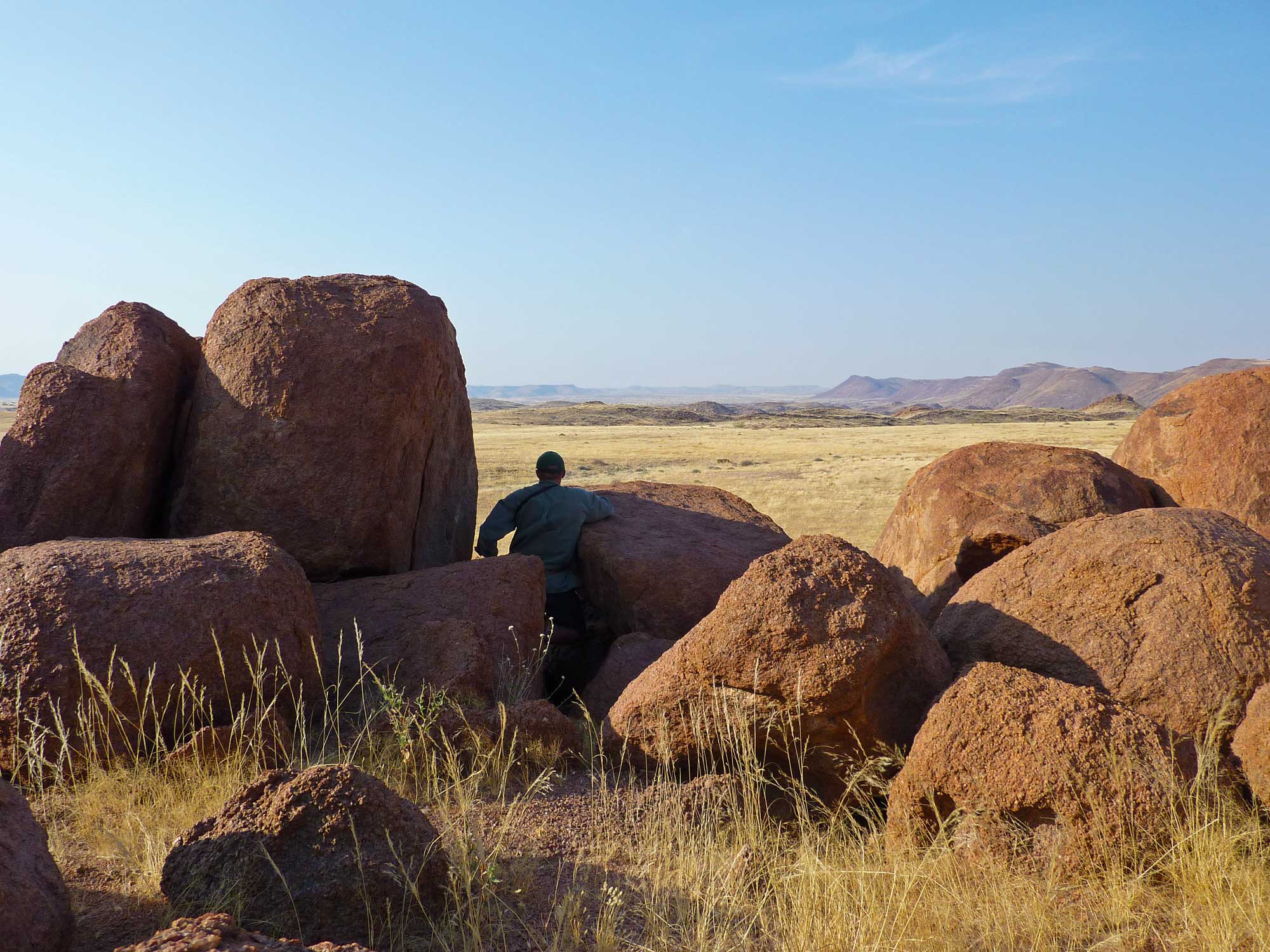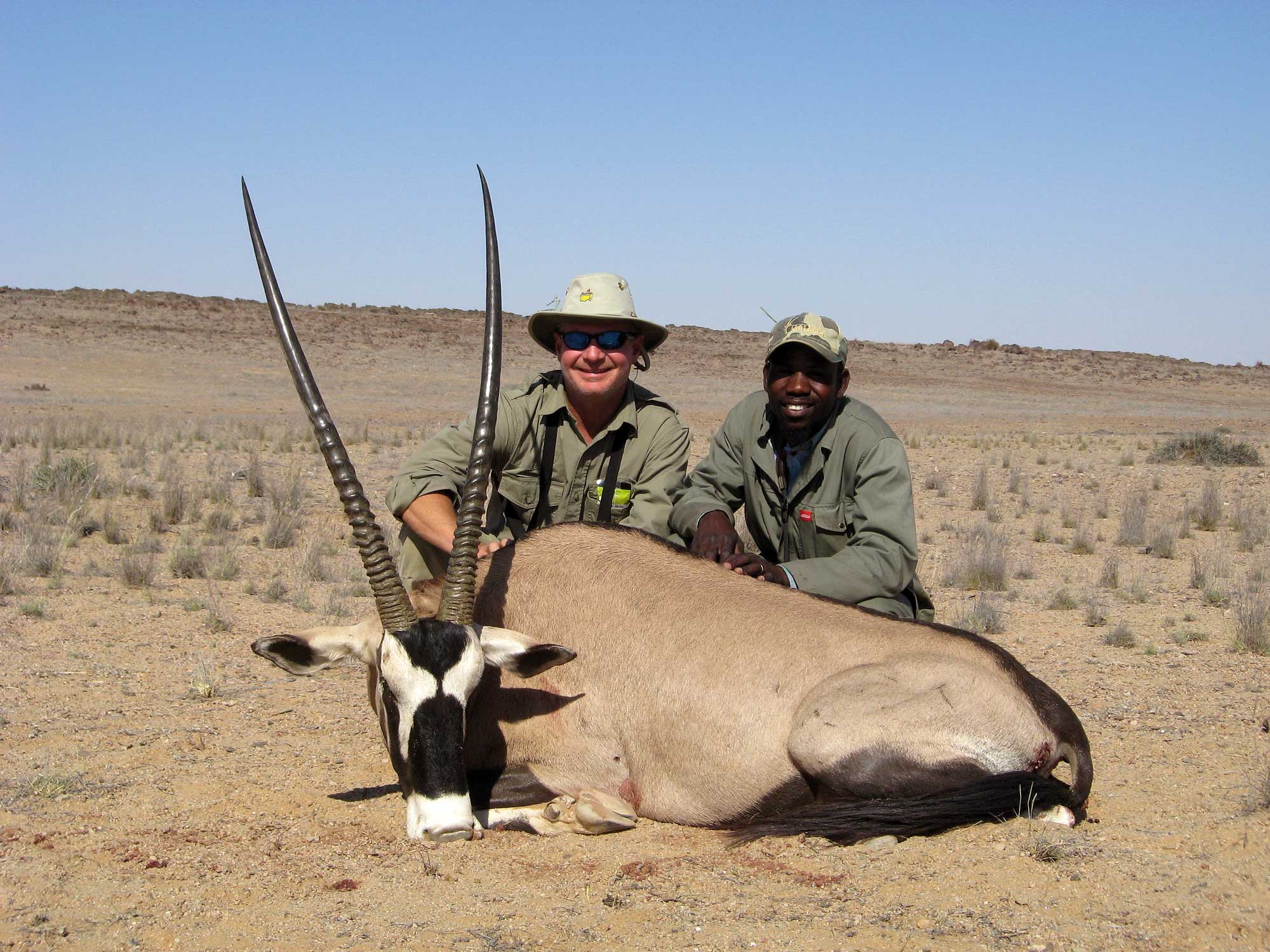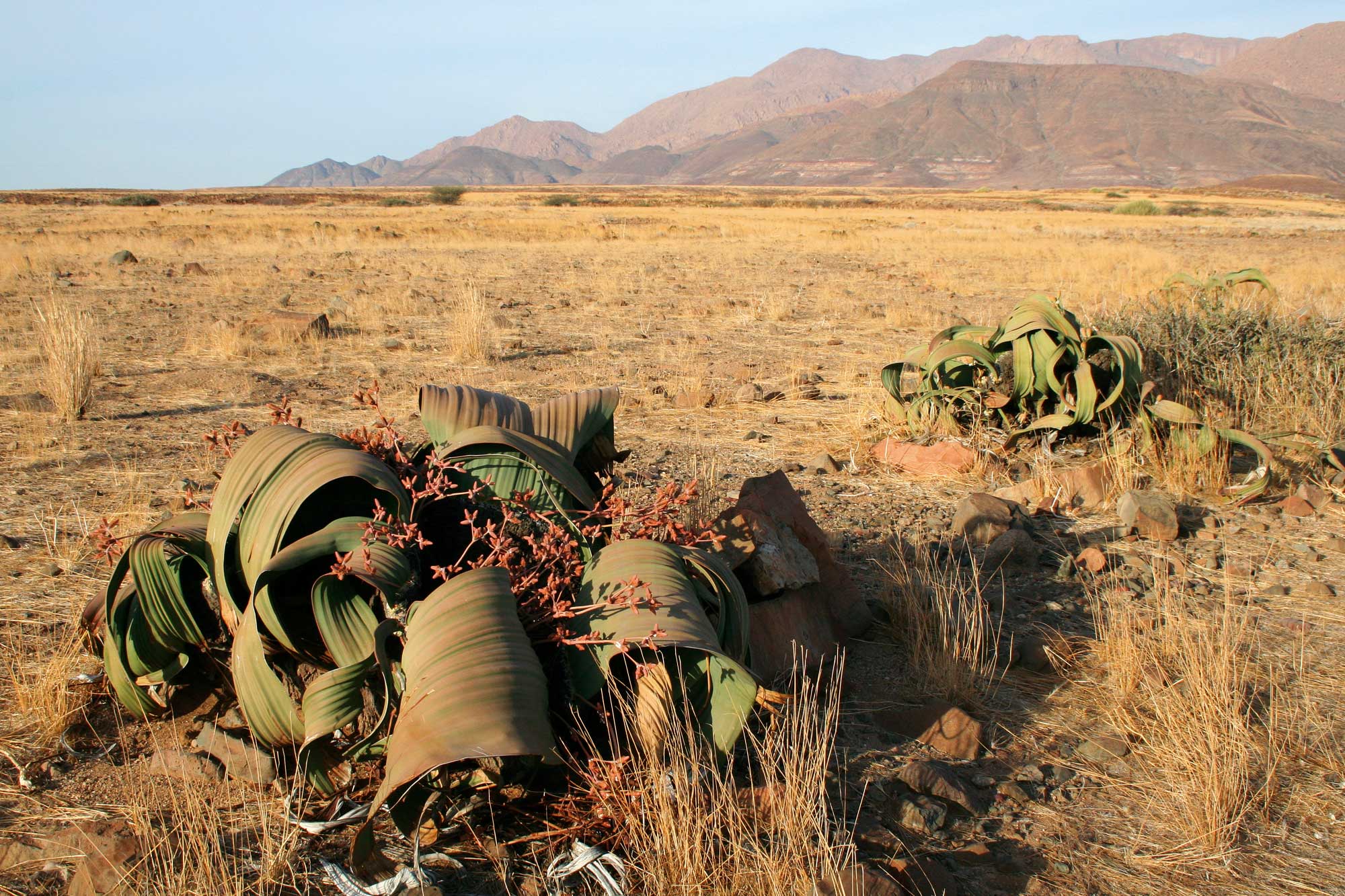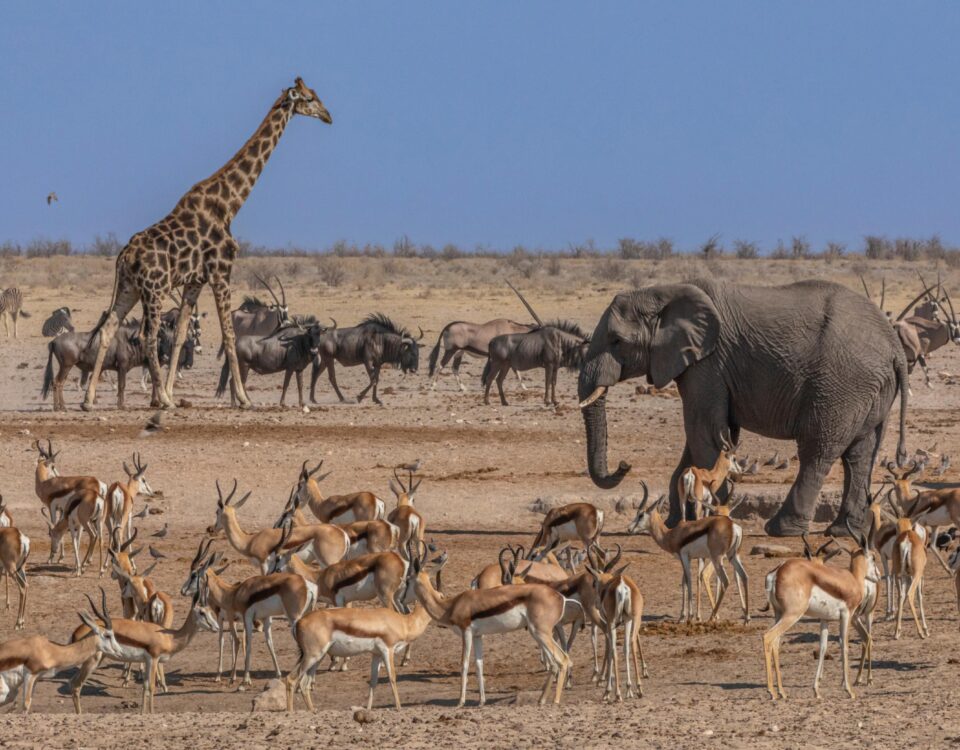| Main photo ©Paul van Schalkwyk

The king of the dry bushveld and the rugged hills
June 14, 2016
What makes a good PH?
June 15, 2016C arl had booked a desert hunt in the Tsiseb conservancy. High on his agenda was a gemsbok – the ‘warrior of solitude’. Gemsbok are notorious for their toughness and are known to absorb a lot of lead if the hunter’s first bullet is not placed well. This Carl experienced firsthand.
On the seventh day of an eight-day hunt we were making headway up a hill, where the rock formations resembled the scales on the back of a large dragon. We had seen several gemsbok in the preceding days, but they were either cows or groups of young animals. In these days, with hard work and a bit of luck thrown in, Carl had managed to bag a Hartmann´s zebra and an old, decent-sized springbok ram. But since then we have not been lucky. Our prized quarry had evaded us. Then, as we were scanning the surroundings, seemingly from nowhere, a gemsbok appeared on top of one of the parallel running ridges. It was about noon, and no sooner had we spotted him than he disappeared again over the ridge. From where we were, we estimated the distance to the hill as roughly three kilometres.
My immediate concern was that the border of the Dorob National Park was a mere seven to ten kilometres on the other side of the ridge, the same direction in which the gemsbok had disappeared. Here we were, hunting in a concession area encompassing close to one million hectares, and it still seemed too small! I said to Carl: “If ever we had a chance, this is it!”
Being about ten kilometres from the vehicle, with our water supply running low, it was now or never. “I cannot even tell you if it´s a bull, nor if he is old enough! But it’s a solitary animal, which is always a good sign.” All Carl did was shrug his shoulders and reply in his Texan drawl: “Well, let´s go!”
The urgency, anticipation and excitement turned us into walking machines. Elias and Eric, the two trackers, Carl and myself covered the distance to where we had seen the blur of the gemsbok in record time. You know that feeling of having bags of cotton wool in your mouth, your pulse rate soaring? A very dry north-easterly wind was howling, making it even harder to walk, blowing straight at us, causing sand to sting our legs, arms and faces.
Before we reached the top of the ridge, we soothed our dry throats with the by-now warm water from our bottles. Tensely we crept up onto the ridge, scanning in all directions, down into the gullies and beyond. Alas! Nothing in sight. “Well! Where the heck is that gemsbok?” Carl barked in agitation. Moments after finishing his sentence, and having similar thoughts in my mind, we saw the typical grey colour of the gemsbok ambling up a ridge about a kilometre away. This time we could easily identify the animal as a large, heavy-bodied bull with long horns.

On the seventh day of an eight-day hunt we were making headway up a hill, where the rock formations resembled the scales on the back of a large dragon. As we were scanning the surroundings, seemingly from nowhere, a gemsbok appeared on top of one of the parallel running ridges.
He had not seen us. We waited until he disappeared over the ridge and then moved quickly, half running, towards the next ridge. I urged Carl on to give everything for this opportunity to bag the warrior. He stayed on my heels. Just before the ridge we paused to catch our breath and for Carl to load his 30-06. Ever so cautiously, in single file, we crawled up to look over the edge.
And there, 160 metres from us on a little ridge, stood our warrior of solitude staring down into a large plain below, his tail blown sideways by the wind.
We tried to get ourselves ready, lying rather uncomfortably on the black rocks, using the rucksack as a rest. By now it was two hours past midday and the rocks we were lying on were hot enough for frying an egg. “Carl, he is a good bull, you can take him! But allow for the wind.” I whispered.
The report of the rifle came a lot faster than I had wanted it to, and the reaction of the gemsbok, kicking out to the back, did not bode well, as this was often the telltale sign of a shot that had struck too far back. Carl immediately cycled a new round into the chamber, but before he could squeeze off another shot, the bull had sped down into the valley out of our sight. We jumped up and raced ahead, throwing ourselves onto the ground again to take aim as the gemsbok increased the distance between itself and us. Carl aimed and fired – nothing! He tried again, and the bull staggered, ran another 40 metres, and then sat down on his haunches. “Fill your magazine!!” We slowly approached the bull and Carl delivered the coup de grâce.
After reliving the rollercoaster of emotions over and over again, we sat down next to the gemsbok, quite exhausted, but relieved and happy. Days like these make us proud to be hunters and grateful to be able to hunt the way we do in areas such as this.
But that is never the end of a hunt. We manoeuvred the vehicle as close as possible and only once all the meat was on the truck, were we ready to head for camp, just as the sun was setting, ending a sublime week of hunting and leaving us with fond memories.


DESERT MAGIC
_______________________________________
The vast gravel plains of Namibia´s western desert fringes are strewn with large granite boulders etched against a backdrop of mountain ranges and changing colours as the day waxes and wanes. Ephemeral rivers that have cut through rolling hills for millions of years feed springs that still yield water, sometimes for the duration of regular droughts. These green oases, maintained by fog generated by the Atlantic Ocean and intermittent rainfall, form the nuclei of the astonishingly abundant life flourishing in this arid land. All flora and fauna that have subsisted in this barren desert for millions of years have adapted to not only survive but also to thrive here. Natural selection, bizarre adaptations and evolution are but some factors that make life possible in this extraordinary region.
Being fortunate to hunt in these extensive desert areas is a privilege in its own right. There is no camera – whether video or photographic – that can ever capture the extent of what the Namib offers. Having walked the desert for kilometres on end pursuing a solitary old springbok in the heat of the day, the heat shimmer and glare so severe that it is close to impossible to judge the trophy size through your binoculars, humbles both me and my clients, who come from all walks of life. The experience underlines the fact that we hunters, with rifle and binoculars in hand, are here for only a nanosecond compared to how long the desert has been around, and for how long it will still be here. More often than not, after a long day of hunting the desert, one can sense that the desert is most certainly alive. I would go as far as saying that you sense that the desert harbours many secrets, if not the very cradle of life.
What an awesome sight to see a solitary gemsbok bull wandering across a gravel plain in the typical regal gait that only these antelope have. He gives the impression that the heat does not affect him in the least. His occasional swishing of the tail is a sign of pure contentment. It seems he knows exactly where he is going. He seldom veers off course or changes speed. He rarely stops to scan the surroundings, his head held high. To me this makes him the warrior of solitude. He seems to be in tune with the desert and the loneliness.
This article was first published in the HUNTiNAMIBIA 2014 issue.


